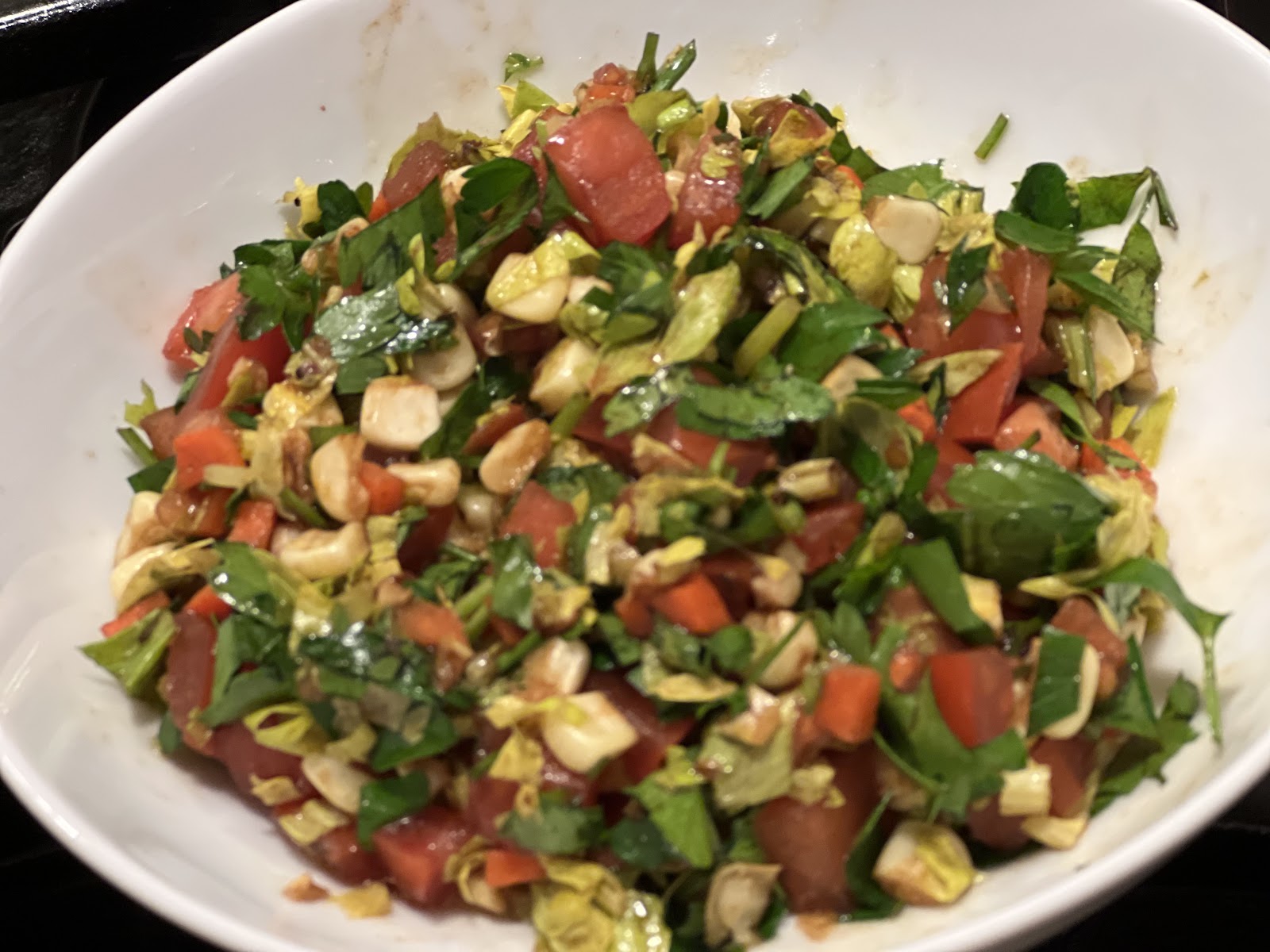 styrofoam cup with it's nest of noodles and bits of dried vegetables, cover, and a minute later you have overly salted "soup" and mushy noodles. On a cold, drizzly day, that can be ok, but it's not a meal-of-choice. Ramen is a step up from Cup o' Noodles, but the same principle applies. Boiling water + instant noodles + "flavor packet" = soup and noodles with vegetables bits. Real ramen bears no resemblance to the packaged ramen in the market. In Japan, ramen restaurants are favorite neighorhood hangouts, usually with a counter and several tables. I've noticed that patrons in ramen restaurants don't do as much talking as they do in other kinds of restaurants. I think that's because the ramen is simply too delicious to want to talk.
styrofoam cup with it's nest of noodles and bits of dried vegetables, cover, and a minute later you have overly salted "soup" and mushy noodles. On a cold, drizzly day, that can be ok, but it's not a meal-of-choice. Ramen is a step up from Cup o' Noodles, but the same principle applies. Boiling water + instant noodles + "flavor packet" = soup and noodles with vegetables bits. Real ramen bears no resemblance to the packaged ramen in the market. In Japan, ramen restaurants are favorite neighorhood hangouts, usually with a counter and several tables. I've noticed that patrons in ramen restaurants don't do as much talking as they do in other kinds of restaurants. I think that's because the ramen is simply too delicious to want to talk.People who love ramen get very obsessive about their noodles. The Official Ramen Homepage has hundreds of recipes for packaged ramen contributed by fans. Rickmond Wong is the ramen fan-extraordinaire. Profiled in the LA Times by Russ Parsons, Wong's web site rameniac.com gives a comprehensive survey of ramen restaurants in LA. Everyone has their favorite. Anne Lai sent me to Little Tokyo to try the ramen at Daikokuya (327 E. 1st Street, Los Angeles 90012, 212/626-1680).
A narrow passageway of a restaurant, Daikokuya is on the north side of 1st Street, half-way
 between San Pedro and Alameda. Of the half-dozen ramen restaurants on the block, only Daikokuya is packed with people at the tables and bar. Besides ramen, Daikokuya also has other traditional Japanese dishes: rice bowls, bento boxes, chicken teriyaki, mixed tempura, pork cutlet, sushi, and sashimi. But it's the ramen I came for, and while there are a dozen varieties to try, I wanted the specialty of the house: Daikoku Ramen, a large bowl of pork soup with noodles, fatty Kurobuta pork, a whole
between San Pedro and Alameda. Of the half-dozen ramen restaurants on the block, only Daikokuya is packed with people at the tables and bar. Besides ramen, Daikokuya also has other traditional Japanese dishes: rice bowls, bento boxes, chicken teriyaki, mixed tempura, pork cutlet, sushi, and sashimi. But it's the ramen I came for, and while there are a dozen varieties to try, I wanted the specialty of the house: Daikoku Ramen, a large bowl of pork soup with noodles, fatty Kurobuta pork, a whole boiled egg, seasoned bamboo shoots, bean sprouts, and green onions.
boiled egg, seasoned bamboo shoots, bean sprouts, and green onions.I took my place at the counter and watched the cooks drop baskets of noodles into the large pot of boiling water. The customer to my right, Jason, could tell I was a first-timer. He helpfully suggested I add some of the minced garlic and pickled ginger condiments to the soup. A good call.
All the ingredients are delicious, but it's the soup itself that makes the ramen at Daikokuya so memorable. If you've seen the Japanese comedy, Tampopo, you know how hard the shop keeper struggles to perfect her pork bone broth. She has to work from early in the morning until late in the evening to get the flavors just right.
I like to adapt restaurant techniques to cooking at home, but while I love the broth, that's too much work for me. I'll use homemade chicken stock instead. What I do take away from Daikokuyo is the realization that fresh ingredients can turn a lifeless package of noodles into a sumptuously refreshing meal.
 At home, ramen is quick and easy to make as long as you have a good supply of homemade chicken stock in your freezer. For the dried ramen noodles, there are hundreds of brands, flavors, and varieties. Try to find one that has the least amount of chemicals in their ingredients' list. Health Food stores sometimes carry packages of organic ramen. Almost any of your favorite fresh vegetables and cooked meats will work.
At home, ramen is quick and easy to make as long as you have a good supply of homemade chicken stock in your freezer. For the dried ramen noodles, there are hundreds of brands, flavors, and varieties. Try to find one that has the least amount of chemicals in their ingredients' list. Health Food stores sometimes carry packages of organic ramen. Almost any of your favorite fresh vegetables and cooked meats will work.Ramen at Home
Yield: 1 serving
Time: 20 minutes
Ingredients
1 package ramen
½ carrot, washed, peeled, cut into thin rounds
½ cup broccoli crowns, washed, sliced
1 shallot, peeled, thin sliced
2 Italian parsley sprigs, washed, use only the leaves, whole or chopped
½ cup shredded chicken, cooked
2 cups homemade chicken stock
1 teaspoon scallions, washed, sliced into rounds, green and white parts (optional)
1 hardboiled egg, sliced (optional)
1 teaspoon sesame oil
1 teaspoon soy sauce
Method
Follow the directions on the package to make the ramen noodles, then drain them and set aside. In a small pot, sauté the vegetables and chicken in the sesame oil until lightly browned, add the chicken stock and soy sauce and simmer for 10 minutes. Add the cooked noodles. Stir well and serve in a large bowl, topped with the scallions and the hardboiled egg if you want.


























